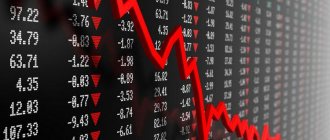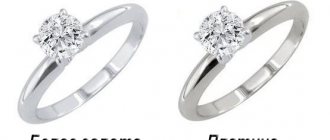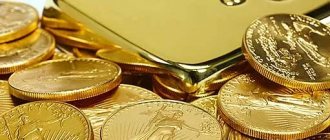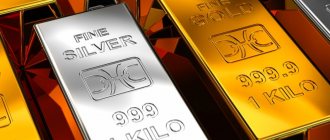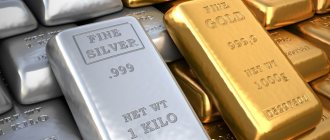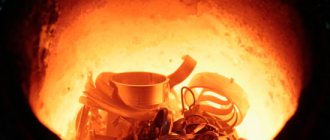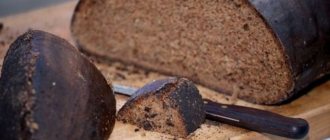Today, there are four precious metals that are widely used in the jewelry business. These are gold, silver, platinum and palladium. All of them were discovered at different times and under different circumstances, however, they are valued by jewelers for their properties that make them ideal for creating jewelry. Let's talk a little about the history of these metals and their characteristics to understand why they are highly valued.
*Read the article “For the first time in 16 years, the value of palladium exceeded the value of gold”*
Gold
Today, gold is considered not only the most precious, but also the “oldest” metal. The first reliable evidence of the use of gold was found in Ancient Egypt and dates back to 3000 BC. Gold has always played a central role in the culture and mythology of various civilizations. For example, in Ancient Egypt it was revered as the metal of the gods, the ancient Greeks considered gold a metal of social status and wealth, and the kingdom of Lydia first began to use it as a currency.
Already in ancient times, people realized that properties such as corrosion resistance, malleability, ductility and luster make gold ideal for creating jewelry. However, people who belonged only to the highest ranks could own it. Today, gold is valued as highly as it was many, many centuries ago, but with the difference that in modern society it has become available to everyone thanks to various samples, or rather due to the alloys used, which significantly reduces its cost.
More expensive than gold
Palladium is a by-product of nickel and platinum mining, and most of its reserves are found in Russia and South Africa. The metal is primarily used in the automotive industry in the production of catalysts for gasoline engines (palladium absorbs hydrocarbons harmful to humans from car exhausts).
As the global economy recovers and car production volumes recover, the demand for palladium and its price will continue to grow, says Vladimir Bragin, director for analysis of financial markets and macroeconomics at Alfa Capital Management Company. “The situation may change, for example, if an autocatalyst of comparable purification quality that does not use palladium is proposed, and such developments are constantly underway,” he recalls. However, according to Bragin, the mass abandonment of palladium is still very far away.
The recovery in metal demand from the automotive industry after the coronavirus is offset by increased production. In particular, the volume of supply of metal from South Africa may increase due to the sale of reserves, recalls BCS World of Investments expert Dmitry Puchkarev. “According to our estimates, on the horizon of the year the price of palladium may be in the range of $2,700-3,400 per ounce,” he believes.
Despite high prices, the specialist does not consider palladium an alternative to gold, since it is perceived primarily as a “defensive” asset - the demand for it is largely investment. Puchkarev believes that individuals are unlikely to be able to make money by purchasing palladium. “The purchase of palladium in itself can hardly be called an attractive investment, since the metal does not generate cash flow, and you can only make money on the difference between the purchase price and the sale price,” he clarified. Instead, the expert recommended paying attention to the shares of Norilsk Nickel, 42% of whose revenue in 2021 was generated from the sale of palladium. “The advantage of such an investment over buying metal is that in the process of operation the company generates profit, which is then used for dividends. This creates additional profitability for shareholders,” concluded Puchkarev.
Let us remind you that since 2021, prices for palladium have begun to rise rapidly. The impetus for this was the “diesel” scandal in Europe, when it turned out that the German concern Volkswagen artificially lowered the levels of harmful substances in the exhaust gases of its cars. This led to the curtailment of state support programs for diesel cars and an increase in demand for cars with gasoline engines. As a result, there was a shortage on the palladium market, and prices for it went up.
Despite the fall in prices in 2021 due to the coronavirus pandemic, palladium began to rise in price again in early 2021, and at the end of April its price reached an all-time high: more than $2,940 per ounce.
Silver
The history of silver is as long as the history of gold. Since ancient times, silver has been used to mint coins. It is curious that at some point in their history, Ancient Egypt and Ancient Greece valued silver more than gold, and silver jewelry and cutlery were truly luxury items. For a long time, silver was the basis of the monetary system of Great Britain and the United States of America.
Silver is a noble, ductile and malleable metal that has a relatively low melting point (962 degrees), which makes it especially popular among jewelers. Silver, like gold, is not subject to corrosion and retains its impeccable appearance for centuries. Thanks to the skillful work of jewelers and the inclusion of precious stones, silver items not only do not decrease their value over time, but often increase it.
Basic properties
In 1801, the German scientist Olbers discovered a planet called Pallas. This discovery became a sensation and made a huge impression on the famous chemist Wollaston. Therefore, when two years later he was able to obtain a new element from raw platinum, he gave it the name palladium.
Palladium is the lightest element of the platinum group. Its density is about 12 g per 1 cubic centimeter. In its pure form, the metal has a silvery-white color, there are no other shades.
Many properties of the metal are similar to those of other noble elements. For example, the mineral is quite plastic, viscous and has good malleability. Just like gold, it can easily be stretched into the thinnest sheet or given any shape, soldered, polished or engraved.
But if you compare the element with platinum, then in some qualities it is inferior to it. For example, it reacts with sulfuric and hydrochloric acids. And nitric acid can dissolve it completely. In relation to other elements, palladium is an inert metal.
Platinum
Platinum is one of the most expensive metals on the planet. However, its value was not immediately recognized. The metal was discovered in the 16th century in Colombia by Spanish conquistadors. The conquerors discovered unknown impurities in platinum and mistook it for low-quality silver. Then the Spanish king, fearing that the status of a “golden power” would be irretrievably lost, ordered all the platinum to be drowned. Only 50 years later, when the possibility of processing it became possible, the metal was appreciated and stood on a par with gold.
According to its properties, platinum is twice as dense as gold and has a high level of corrosion resistance, much higher. During the research, metals with similar physical and chemical properties were discovered, one of which is palladium. In addition, palladium and platinum are included in the alloy of white gold and directly determine its value.
The Federal Reserve is gently pushing prices up
The latest fears, however, did not come true: at a recent meeting on September 22, the American regulator took a position that was perhaps the most dovish of all possible in conditions of rapidly accelerating inflation, Pushkarev believes. The Fed has not yet begun to reduce the turnover of the dollar printing press, and investors in all assets, including platinum, at least in this regard, breathed a sigh of relief. As a result, already on September 22-23, the price of platinum again managed to rise from the annual minimum above $1,000 per ounce, but has not yet been able to stay at these levels sustainably, and at the beginning of the new trading week it is slightly lower.
Today, Tuesday, September 28, trading in platinum during Asian hours was in a narrow corridor from $971 to $983, the analyst notes. According to him, sentiment not only for the coming week, but perhaps for most of October, will remain mixed - at least until the obvious resumption of work in automobile production. Everyone understands the temporary and even somewhat absurd nature of price fluctuations for both palladium and platinum, considering them now already cheap - even if by the standards of the last few years, platinum has only touched not the lower, but the upper bar of the former price corridor. And the part of the market directly related to physical orders for production is most likely ready to resume purchases at any convenient moment, so as not to buy more expensively later, Pushkarev believes.
But both real customers and a crowd of stock speculators continue to fear a new decline in prices due to the usual inertia of movement, while the process of normalizing the work of automobile production is delayed, the expert adds. So, it’s unlikely that anyone can now predict with certainty the final “bottom” in the price of platinum for this fall, and the exact moment when prices for platinum group metals will shoot up again. It is only clear that it makes sense to monitor both price charts, waiting for technical confirmation, and news from automakers, Pushkarev concludes.
Palladium
The youngest metal from the noble family of Palladium, Gold, Platinum and Silver. It was discovered only in 1803 by the English chemist William Wollaston by combining raw platinum with aqua regia and adding mercuric cyanide. The unusual discovery of the precious metal was highly appreciated by his contemporaries.
The main value of this metal lies in its chemical properties: palladium at ordinary temperatures is not affected by hydrochloric acid, fluorine, or aqua regia. It does not fade in air, cracks and scratches do not form on it. The metal is distinguished by its enviable strength and, at the same time, is easily forged, welded and machined, which makes it popular not only in jewelry, but also in medicine and aircraft construction.
However, unlike its famous brother platinum, palladium is less known to the general public, and therefore remains in the shadows. It is undeservedly underestimated everywhere, although its properties are in no way inferior, and in some places it even surpasses not only platinum, but also its other brothers. By the way, the cost of palladium for the first time in 16 years exceeded the cost of gold and is still not losing ground (read the article here).
This brings us to the end of our short excursion into the history and properties of four precious metals. We hope that this article was not only interesting, but also useful for you in the future selection of jewelry.
Try
Since palladium is a soft metal, it is not used in its pure form. Such an alloy will not be able to withstand even slight external influences.
Jewelers use minerals with various impurities for their work. The sample size of the alloy also depends on their number and name.
The main samples of palladium are presented in the table.
| Try | Compound |
| 500 | The alloy contains 50% silver or nickel. |
| 850 | About 15% is silver, nickel or copper. |
| 950 | The composition contains about 5% ruthenium, copper or nickel. |
All metals impart hardness to the element. And if you add gold or silver, you can increase the wear resistance of the alloy.
Advantages of palladium over gold
Many people believe that palladium is not valued as a precious metal. However, this material is widely used in jewelry , despite its rarity. Masters note several advantages of palladium that gold does not have:
- found in nature 30 times less often;
- it contains more than 80% precious metal;
- jewelry made from it can be worn without taking it off;
- is not covered with an additional layer, so the products do not lose color over time;
- Gold accessories can become deformed over time. This is due to the softness of the metal.
So, everyone must decide for themselves which jewelry they like best. In any case, products made from these two metals definitely deserve the attention of buyers, as they are considered one of the best on the jewelry market.
28.04.21
Features of palladium
Palladium is a rare metal . Therefore, it will not be possible to purchase accessories from a pure copy.
Typically it is used in alloy with nickel and ruthenium
It can be recognized by its light original shade and characteristic shine. If you compare palladium and silver accessories, they will differ significantly.
Jewelers focus on the following advantages.
- High strength . Over time, jewelry made from this material will not lose its original appearance, is not subject to mechanical damage and does not darken.
- Hypoallergenic . This metal does not cause skin allergies.
- A light weight . If the product was made of high quality, it will be almost weightless.
The only drawback is the high price. The cost of 1 gram is estimated at approximately 4,000 rubles .
Supply and demand
Gold, silver, palladium and other metals respond to changes in market supply and demand.
If supply falls without reducing demand, the price rises. This is simply the law of pricing. But there is another type of supply and demand to which all precious metals respond to varying degrees. This is the supply and demand of money (in this case we are talking about US dollars, because the cost of precious metals on the international market is expressed in US dollars). If the supply (dollar money supply) rises, as it has for over 5 years, the value of precious metals rises if everything else is in balance.
If the demand for money (dollars) increases, which apparently has also been the case for more than 5 years, prices go down with other factors in equilibrium. This is one of the reasons for the correlation between palladium and other precious metals. In the long term, all precious metals are set for growth, because the money supply is constantly increasing.
Sometimes there are situations when the money supply grows, but the demand for money falls. In such cases, gold and silver usually outperform other metals.
Many people mistakenly believe that the value of gold and silver increases due to general inflation. But in reality, things are a little different. The value of gold and silver may fluctuate within a narrow range or decline during periods of mild inflation. If the market does not expect a strong rise in inflation, demand for precious metals as safe-haven assets may remain quite low. This is exactly what happened for most of the 80s and 90s of the last century.
On the other hand, if price inflation is high and the market is scared about it, gold and silver will rise in price at a faster rate than the rate of inflation. This was observed in the 70s of the last century. If we see this scenario again, gold and silver will once again begin to skyrocket in price, unless of course we see a major disruption in the supply of one of the other precious metals.
